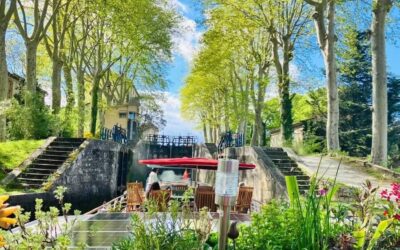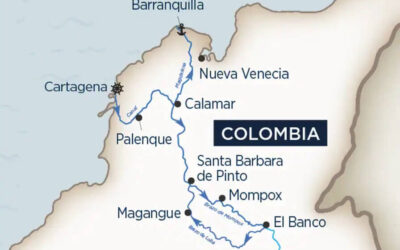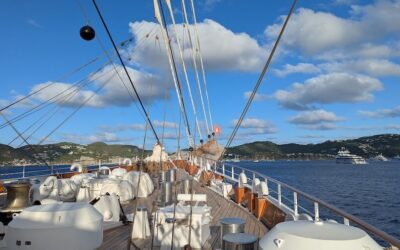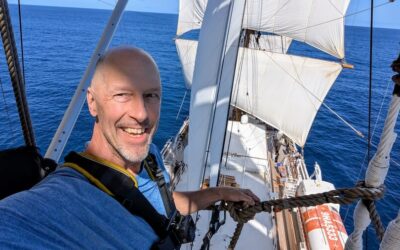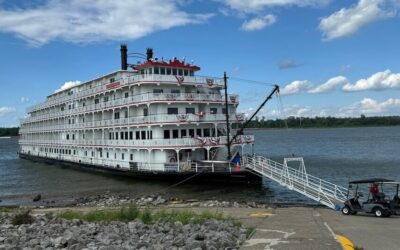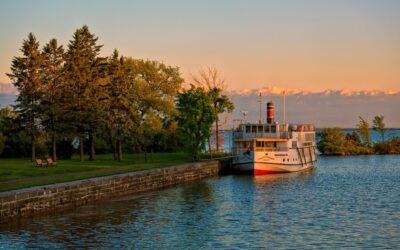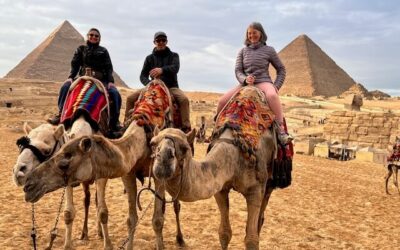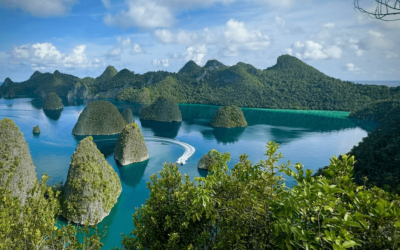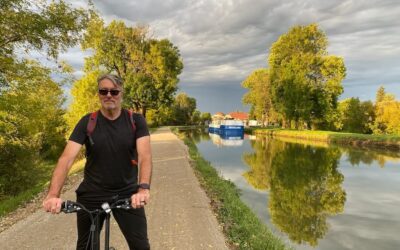Small Ship Amazon Cruising
The world of the living contains enough marvels and mysteries as it is — marvels and mysteries acting upon our emotions and intelligence in ways so inexplicable that it would almost justify the conception of life as an enchanted state. — Joseph Conrad
Small Ship Amazon Cruising: The Mighty Jungle
The power of this jungle is beyond words. But you can feel it when you are in it. At the core of its profound silence you can sense the fine hum of the tremendous force of nature, about as powerful as it exists anywhere.
We cruise over the still surface of Rio Negro’s black water in a state of wonder, observing the magnificent spectacle of the jungle’s thick, voluptuous growth, its trees towering overhead, reflecting perfectly in the mirror surface of the river.
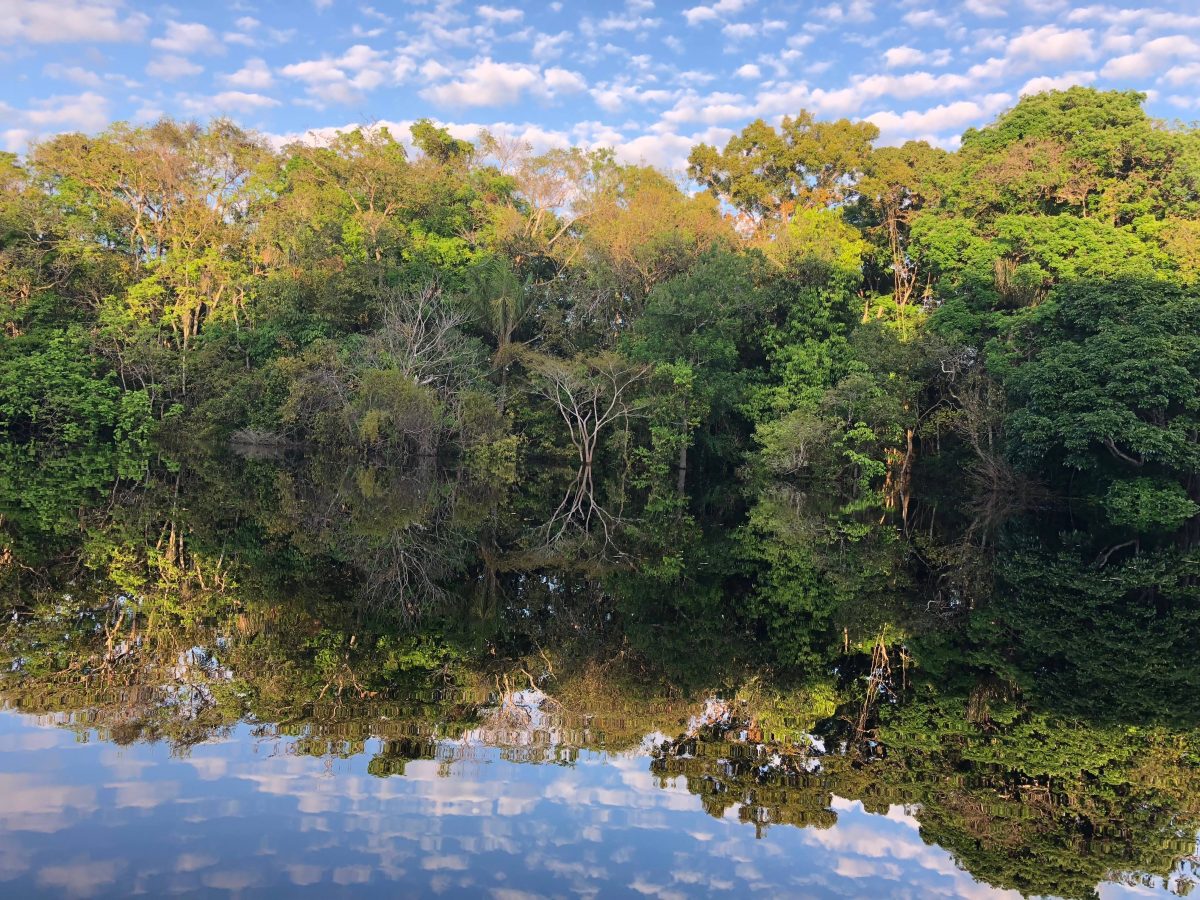
The morning symphony of the birds and howler monkeys, and the perfect mirror of the black water. * Photo: David Cogswell
The junglescapes are scenes Gauguin would die for. The squawks and screeches of morning birds create a symphony that would charm and inspire Vivaldi or Beethoven. The skies display vast panoramas with great celestial dramas unfolding in the tall, gathering thunderheads and the sparkling nighttime constellations.
Edy, our wilderness guide, accelerates the canoe for a stretch then turns off the motor and we glide silently, listening to the sounds, mostly birds, but also the haunting sound of the howler monkeys.
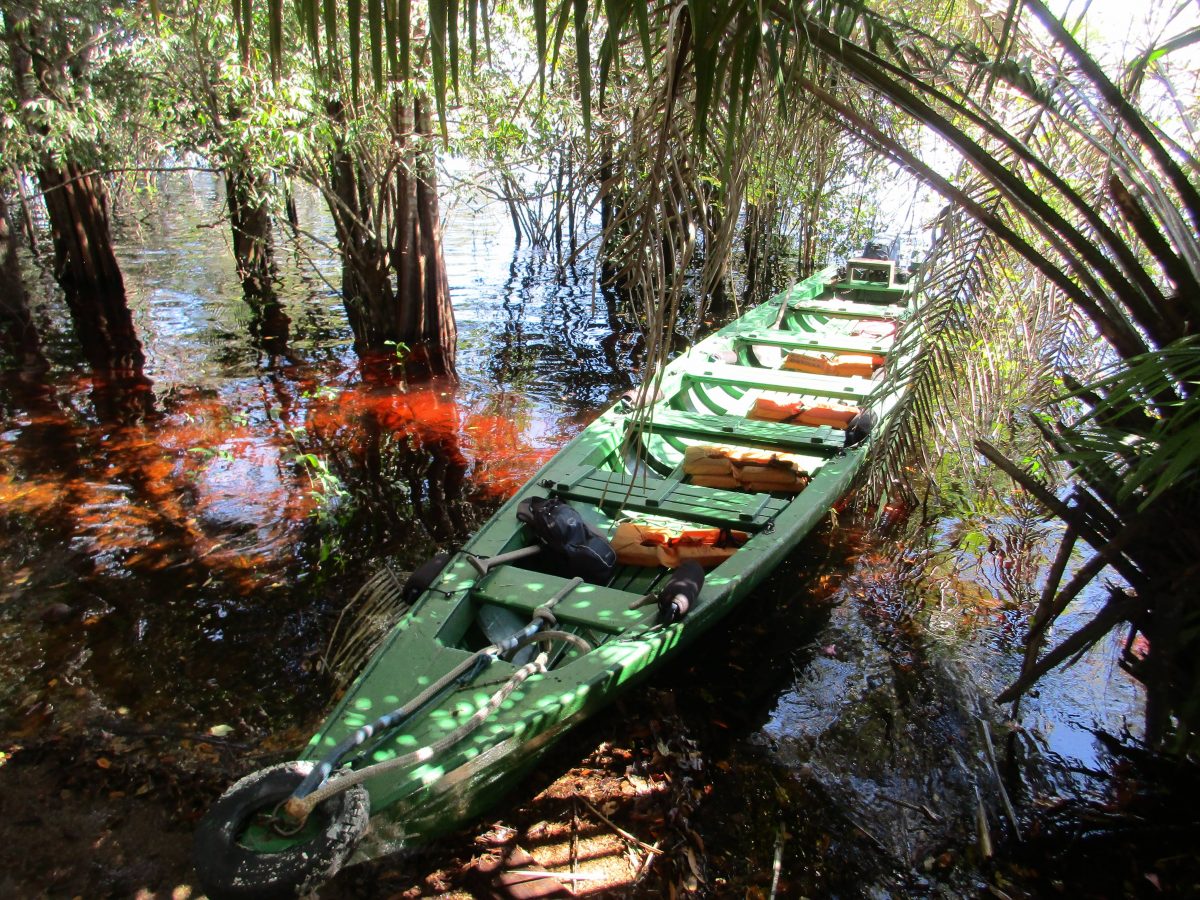
One of our excursion canoes on terra firma. * Photo: David Cogswell
In addition to the outboard gasoline motor the canoe has a quiet battery-operated motor for pushing it along quietly. And there are paddles as well.
Being quiet is an important part of our wildlife viewing excursions.
The sound of the howler monkeys is like a low roar that comes in long rhythmic sweeps, like a howling wind. The sound is huge. It seems too vast to have come from an animal. It sounds more like a larger natural phenomenon, like wind, or the roar of the ocean or a waterfall.
In the relative calm of the morning, the howlers’ low roar creates the sense of the earth breathing, wheezing like a huge bellows. This is the voice of the wilderness.
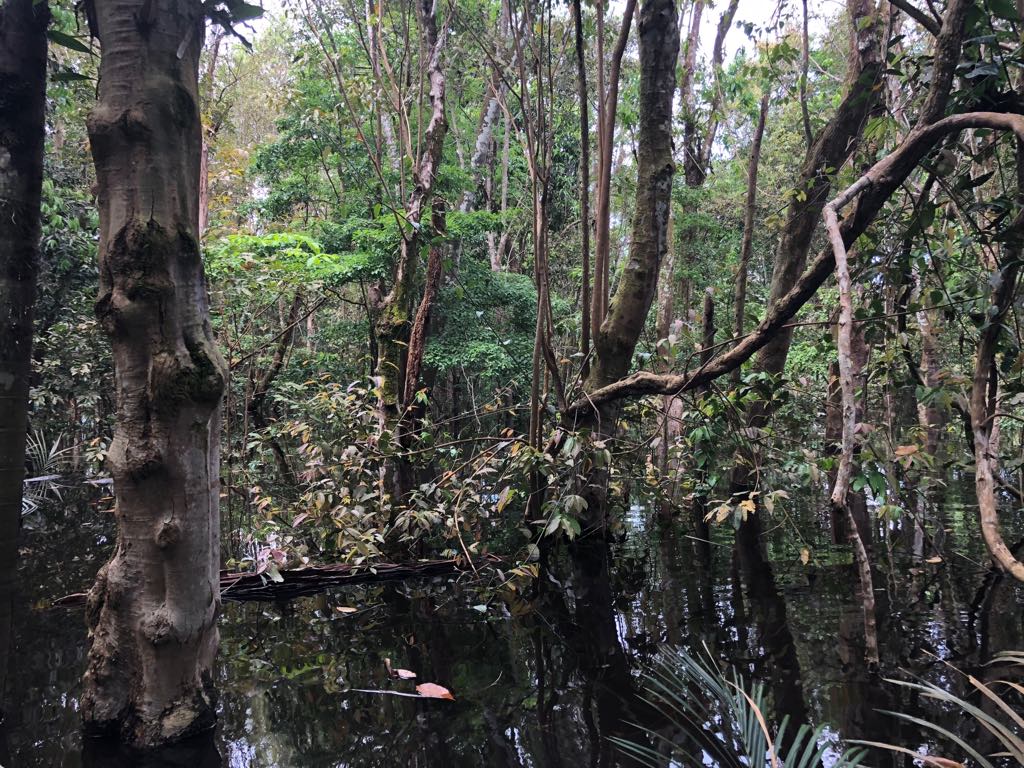
The riotous growth of the jungle. * Photo: David Cogswell
Edy drives us into a cove, a black lagoon, and we lean sideways to avoid colliding with branches from the thick vegetation growing out of the water. We glide by the tops of trees that are submerged in 30 feet of water that will recede and vanish in the next couple of months as the dry season sets in.
The sound of the howler monkeys envelops us. We are hearing an eerie primate symphony. The sound is not just random, as the din of a crowd at a cocktail party. It is a group activity and the sound has a definite, organized structure. It’s not noise, it’s a choir of monkeys.
I hear a bass voice in an alternating rhythm to the main group sound, like a call-and-response structure. After a long while the rhythmic roar builds to a crescendo and then stops dead, all together, a sudden, synchronized cessation and then silence.
It was like the final cadence of a symphony.
Subscribe to our monthly small ship cruise email
Subscribe to QuirkyCruise.com for monthly curated newsletters highlighting our top small cruise ship reviews, round-ups & offers!
Small Ship Amazon Cruising: Cruising the Jungle
If it’s true, as some say, that some experiences “take years off your life,” here is one that might add to it. If it doesn’t actually add years, it could surely add depth and enrichment. I was fortunate at last January’s New York Times Travel Show to run into Mark Baker, the founder of Amazon Nature Tours.
The 20-year old company conducts river cruises through the Amazon Jungle on a jewel of a riverboat called M/Y Tucano that carries only 17 passengers.
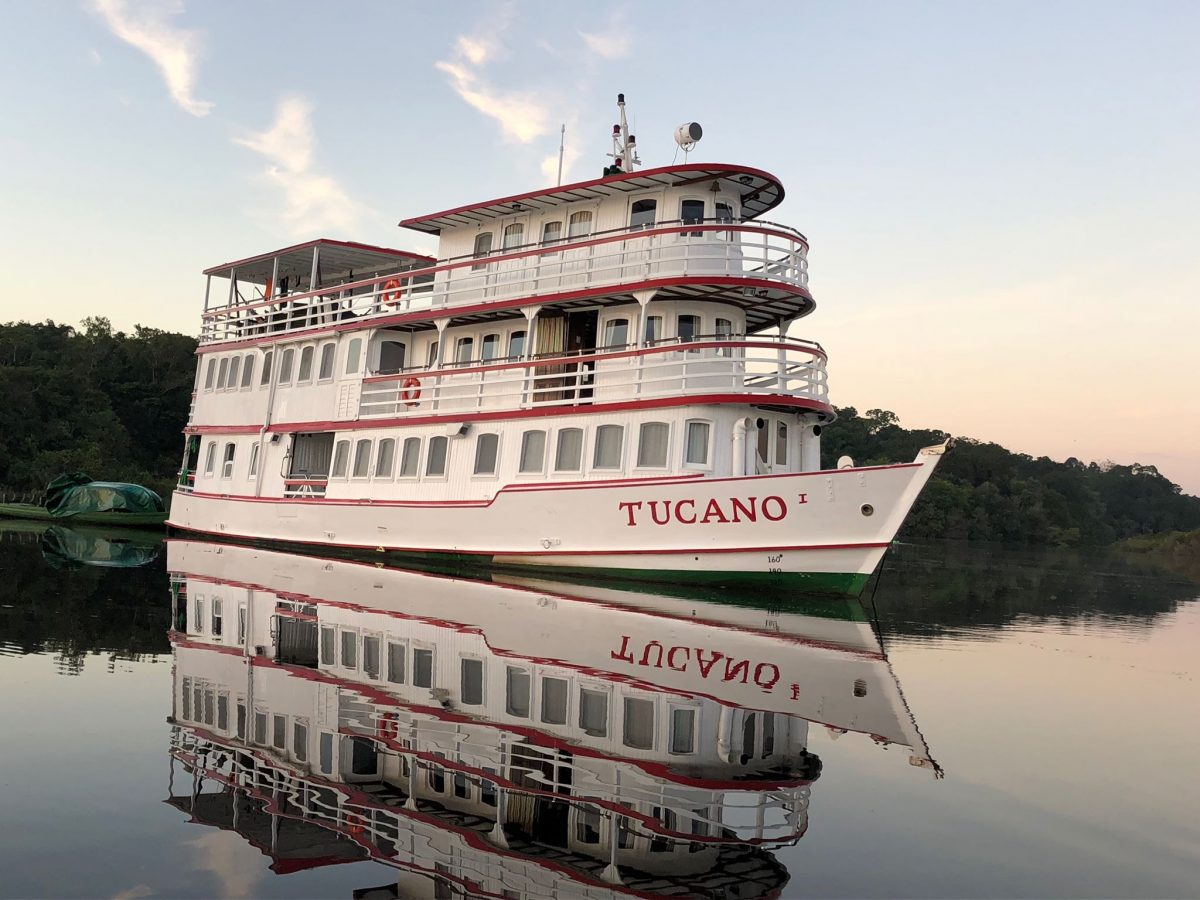
Tucano on mirror. * Photo: David Cogswell
For me traveling to the Amazon was the fulfillment of a lifetime dream. As a child I inherited an old hardback edition of Tarzan of the Apes and read it a few times during my childhood. The story of the human boy raised by apes in the jungle captured my imagination, and I spent much of my childhood in a jungle of my imagination. Finally I was going to see the real thing!
I always wanted to go to the jungle. And the Amazon is the real thing. Once you have been there, you know you have seen the ultimate tropical rainforest, and everything else can be evaluated from that perspective. I thought that the experience of the Amazon would set the broadest possible parameters of nature in my experience. From the Amazon to New York City about covers the whole of range evolution from the primordial jungle to the height of modern civilization.
I was also driven by the sense that we humans often get so wrapped up in the bells and whistles of our civilization that we lose the sense of the natural world upon which it is built. We let our walls and fences block us from experiencing the full dimensionality of life.
Like Narcissus we lose ourselves in our own reflection.
I wanted to go to the Amazon, to recover those roots, to get as close as I could to experiencing the fundamental nature of life that underlies all our human creations and distractions.
The Amazon preserves for us that primordial reality. It is in many ways unchanged from millions of years ago, from even before there were human beings. This is a real encounter with the eternal, or as close to the eternal as life on earth can claim.
The Amazon is Eden unspoiled. After a few days I realized that this was not the kind of trip one should expect to return from exactly the same as when you left. You would not want to go back and pick up exactly where you were before you left. No. This is a transformational experience.
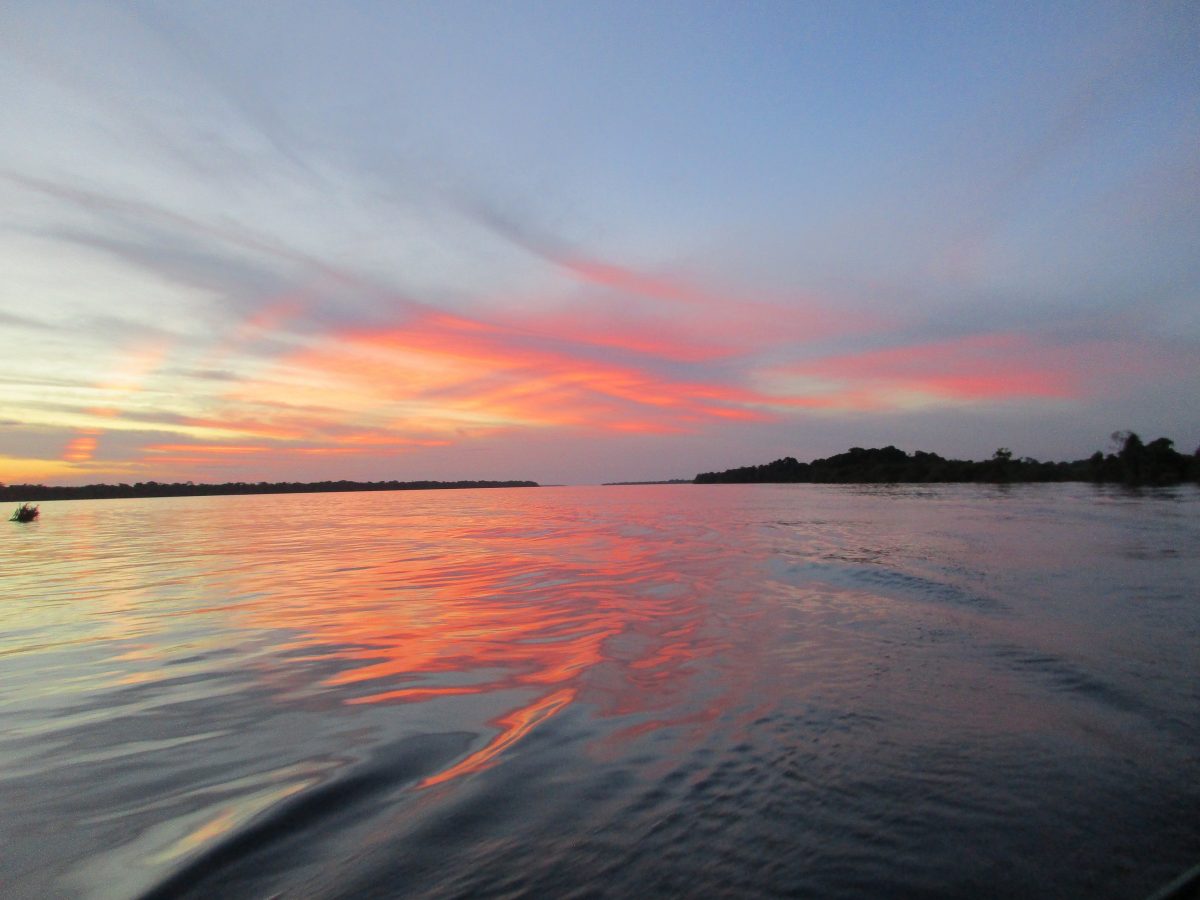
Sunset on the water.* Photo: David Cogswell
Small Ship Amazon Cruising: Instructions Included
Mark Baker gives his guests a small booklet called “Useful Information for Expedition Travel: The Motor Yacht Tucano,” in which he has compiled a rich depository of information and lore gathered from decades of exploring the Amazon jungle by riverboat. The text is peppered throughout by pull quotes from literature about the joys of the wilderness.
“I went to the woods because I wished to live deliberately,” wrote Henry David Thoreau, “to front only the essential facts of life and see if I could not learn what it had to teach, and not, when I came to die, discover that I had not lived.”
Yeah! I could sign onto that. A company that puts something like that in its booking documents would be a good one to go with, I thought. And my original instinct bore out through the trip. I couldn’t imagine a better introduction to the Amazon.
One more quote from the Tucano instruction manual:
“Come, my friends. ‘Tis not too late to seek a newer world.” — Alfred Lord Tennyson.
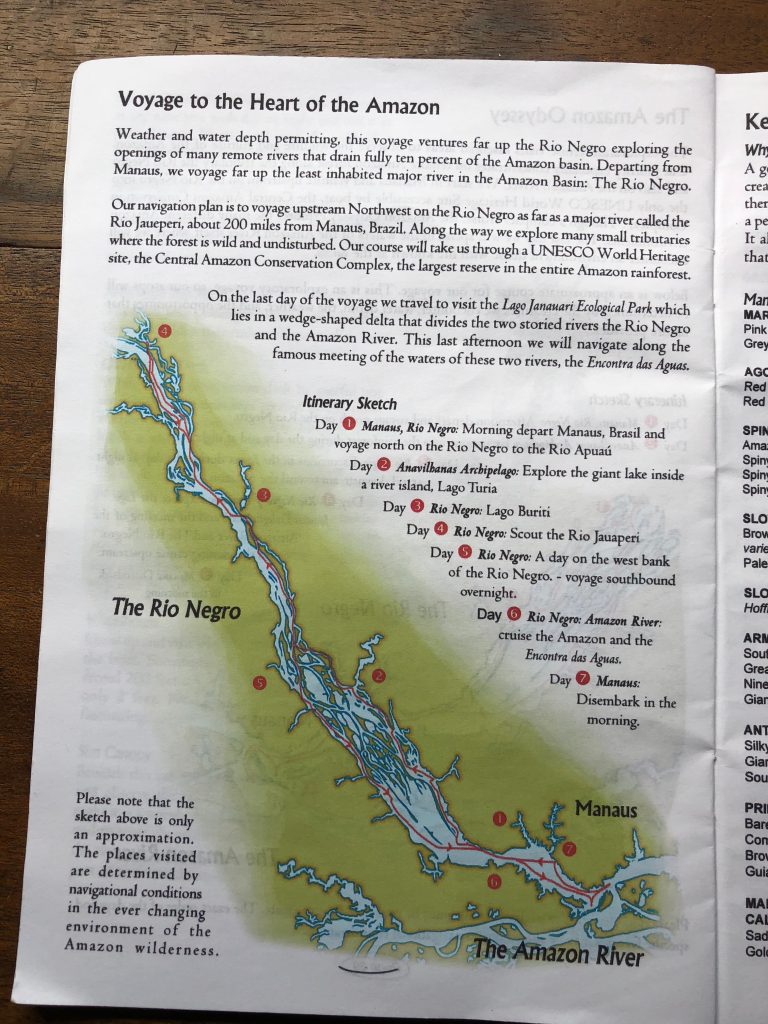
A page from Mark Baker’s helpful Amazon guide. * Photo: David Cogswell
Small Ship Amazon Cruising: Incomparable Amazon
Here’s some perspective. The Amazon Basin, the area of South America that is drained by the Amazon, is almost as large as the continental United States. It occupies half of the South American continent, including 75 percent of Brazil and parts of Colombia, Peru, Venezuela, Ecuador, Suriname and Guyana. Amazônia is the world’s largest rainforest, covering 2.5 million square miles.
The Amazon River system is the largest body of fresh water in the world, containing one fifth of all the river water on earth.
Up to seven miles in some places, it gets so wide that it is impossible to see one shore from the other. Marajó Island in the mouth of the river is larger than Switzerland. The Amazon empties more than 12 times as much water into the ocean as the Mississippi. It carries five billion tons of sediment into the ocean annually and muddies the ocean water for hundreds of miles from the coast. We’re talking big stuff. The Amazon is The Chief.
The industrialists always saw the Amazon as a great reservoir of resources to plunder to make themselves rich. But the Amazon has resisted them to a remarkable degree. It is untamed wilderness.
Lieutenant William Herndon gushed in the journal of his survey of the Amazon for the U.S. Navy in 1851: “Its capacities for trade and commerce are inconceivably great. Its industrial future is the most dazzling; and to the touch of steam, settlement and cultivation, this rolling stream and its magnificent watershed would start up into a display of industrial results that could indicate the Valley of the Amazon as one of the most enchanting regions on the face of the earth.”
But, as Peter Matthiessen wrote in Cloud Forest in 1961, “The Amazon remains as sullen and intractable as it ever was. Indeed, it is startling to find how exactly the descriptions of Herndon and such contemporaries as the great naturalist H.W. Bates and the botanist Richard Spruce correspond with the appearance of the river as it is today. The few large towns excepted, the traveler on the Amazon sees almost precisely what these men saw a century ago.”
The rubber boom in the Amazon was one of the greatest rushes to wealth the world has ever seen, but it is gone today. We visited one of the once-thriving rubber colonies and its neoclassical pillars have been retaken by the robust growth of the jungle, and now it is an overgrown ruin.
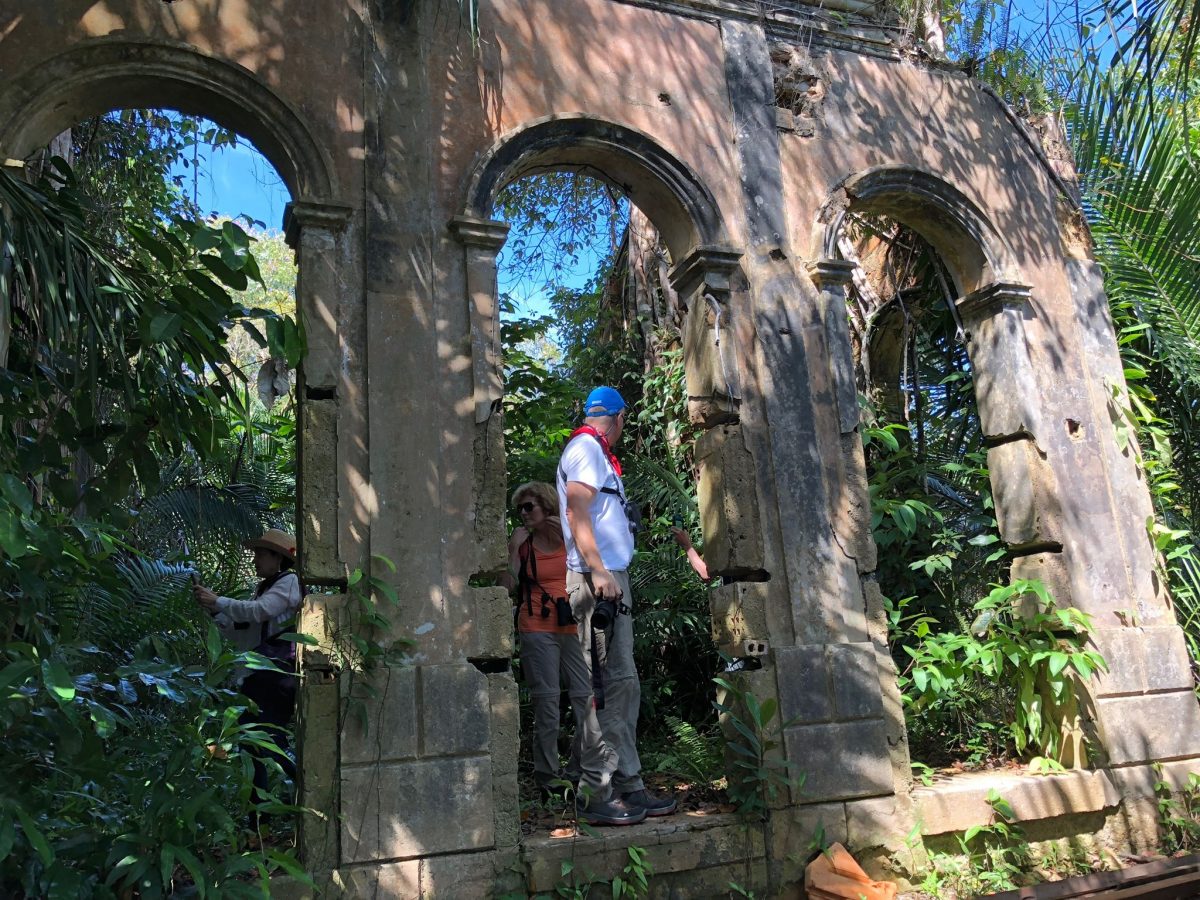
The ruin of a rubber colony. * Photo: David Cogswell
Small Ship Amazon Cruising: Manaus, City in the Jungle
The trip began with a flight from Miami to Manaus, Brazil, on the Rio Negro about 25 miles upstream from where it joins Rio Solimões to become the Amazon. Manaus is the capital of Amazona, Brazil’s largest state. It has a population of only 3 million, and two thirds of them live in Manaus.
During the rubber boom Manaus became one of the busiest ports in the world, though it is 800 miles inland from the Atlantic.
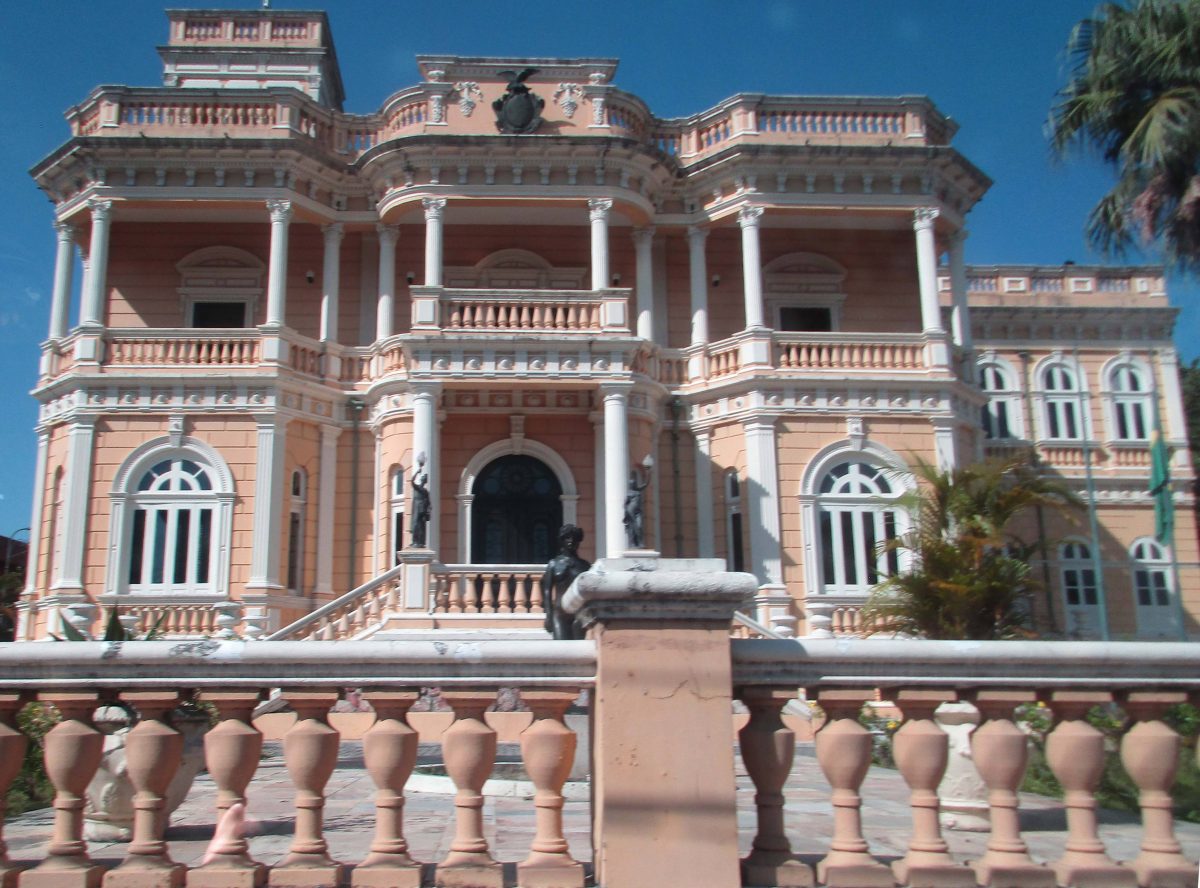
One of the few remaining vestiges of the riches of old Manaus, a rubber baron’s mansion. * Photo: David Cogswell
Manaus is still a bustling, vibrant international city, but the evaporation of capital when the rubber boom went bust left Manaus a threadbare remnant of the glory days.
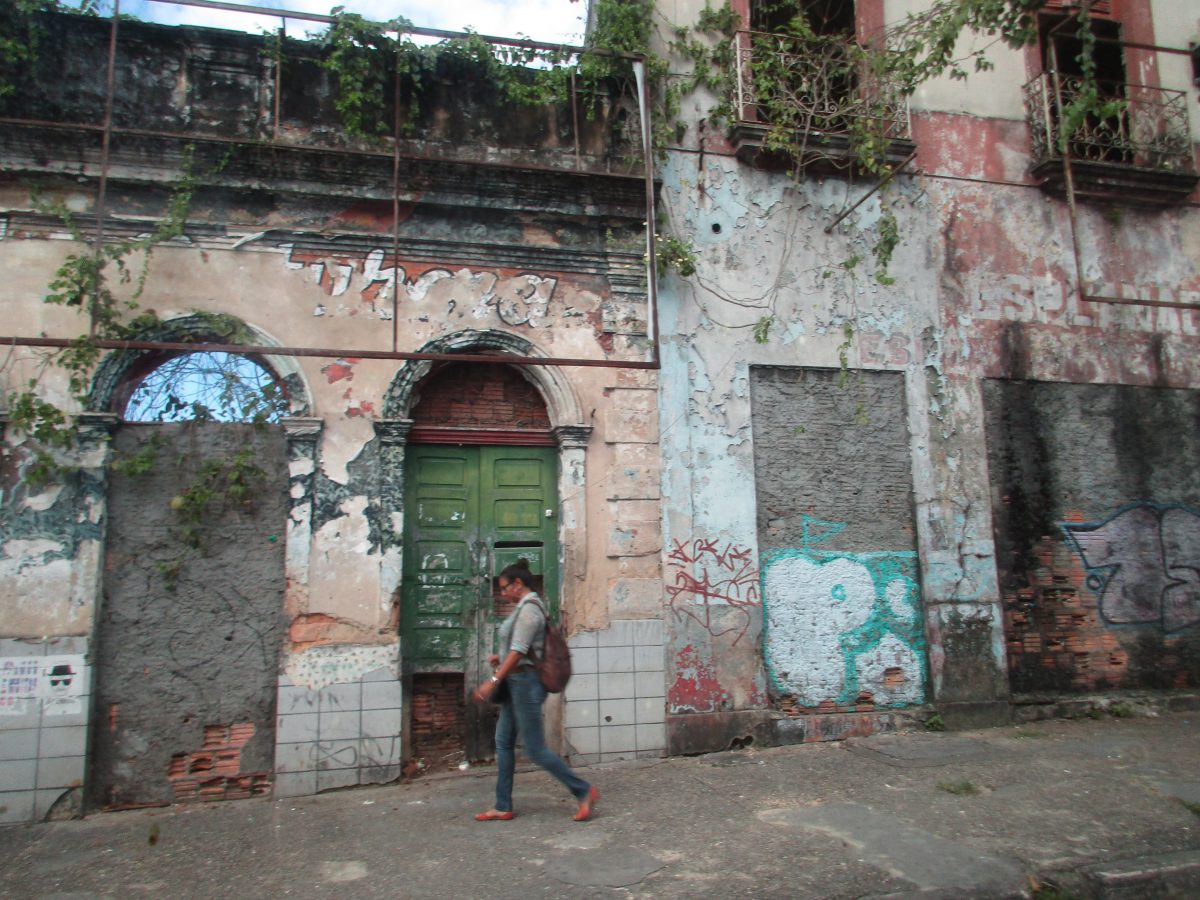
Today’s Manaus. * Photo: David Cogswell
We spent the night at the Hotel Tropical near the bank of the Rio Negro at the pastoral edge of Manaus, and at 7 a.m. the next morning we met our cruise director and wilderness guide Edivam de Lima Regis, or Edy (pronounced “Edgy”), who came to take us to board the Tucano.
Edy led the trip, coordinated all our activities and watched over us from beginning to end. We had other guides and supporters when we went on jungle walks or kayak or canoe rides. The boat had a staff of several cheerful, helpful and competent Brazilians.
Small Ship Amazon Cruising: Rio Negro and Rio Solimões
Our itinerary mainly explored streams and lakes that flow in and out of the Rio Negro, one of the Amazon’s principal tributaries.
Like the Yangtze, the Amazon has different names in different places. With 1,100 tributaries, the Amazon’s actual source is still a matter of debate. Geographers at least agree that the Amazon originates in the lakes of the Peruvian Andes. When it crosses the border into Brazil the river that is called the Amazon in Peru is renamed Rio Solimões.
Rio Negro is much older than Solimões and its water is clearer. It has washed away most of its silt over the eons and now runs over a rocky bed. Rio Negro’s water appears dark from humic acid left over from the incomplete breakdown of vegetation in the water. But it’s good, clean, fresh-smelling water for swimming.
The black surface is a perfect mirror surface creating dazzling optical effects as it reflects the dense, tangled jungle growth and the sky above. In contrast, Rio Solimões, the “white water,” is a newer river, dense withmicroorganisms and silt and has a milky brown color with little reflection.
At the point where the “black water” of Rio Negro meets the “white water” of Rio Solimões, the two streams are so different in temperature, viscosity, acidity and momentum that they don’t mix. They actually run as two separate streams for a dozen miles before finally blending and being rechristened the Amazon for the final stretches of its drive to the Atlantic.
Near the end of our trip we traveled back downstream past Manaus to see for ourselves the merging of the two vast bodies of water at the point where they came together. Each of the two streams was as wide as a huge lake. They contrasted clearly in color and repelled each other like oil and water.
We watched some of the first few eddies passing from one side to the other, the tentative beginnings of the vast merging process that would take place over the next 12 miles of rolling downstream. It was practically beyond human capacity to process what we were seeing. But there it was. Talk about traveling for perspective!
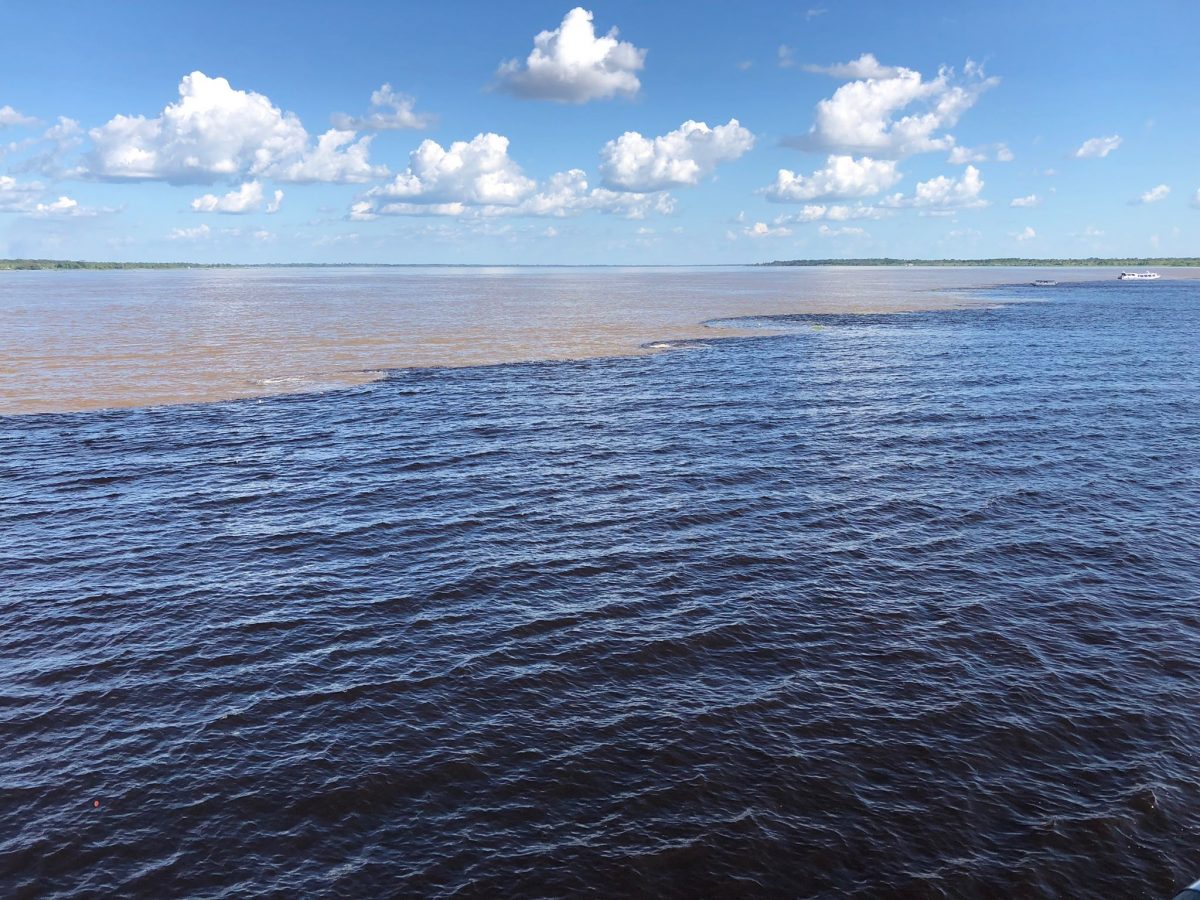
Where the black water meets the white water. * Photo: David Cogswell
Small Ship Amazon Cruising: Home Sweet Tucano
It was literally a five-minute walk from the Hotel Tropical to the dock where we first encountered M/Y Tucano, and she was a beautiful, charming little jewel.
Three levels, painted sparkling white with bright red trim, as inviting as you could imagine, the Tucano was sitting a short ways offshore. To get to the ship we boarded a bright green canoe with an outboard motor and a few rows of benches for passengers.
The canoe pulled alongside the Tucano and we climbed in. Mark Baker designed the motor yacht to emulate Amazon ferry boats. But it is a river cruise vessel, a sort of houseboat. It had that intangible quality of friendliness that made you feel immediately at home, part of the family.
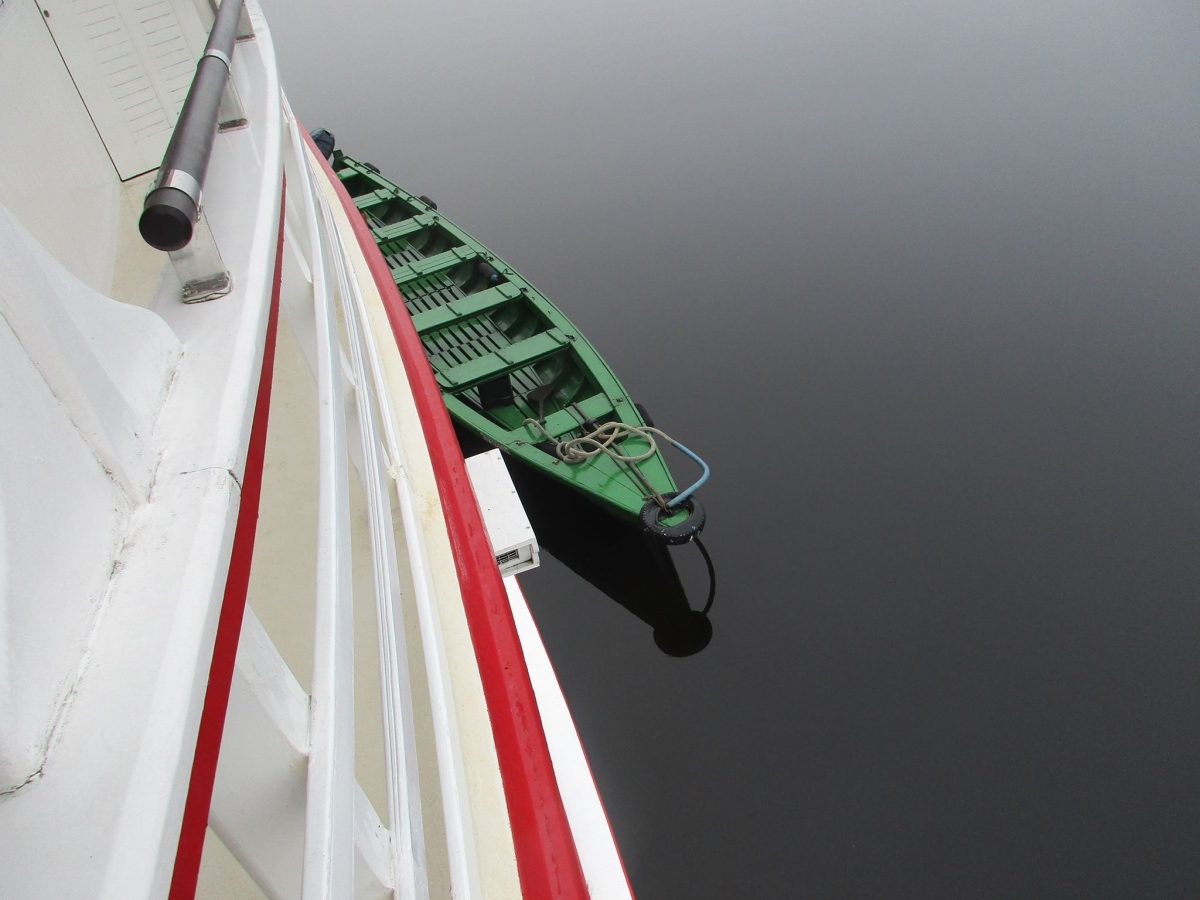
One of Tucano’s two canoes. * Photo: David Cogswell
The riverboat was specifically designed for deep forest exploration with a shallow draft, a small fleet of exploration craft, and cabins designed as safe and comfortable havens.
The Tucano is constructed mostly of wood in the early 2000s, so it is organic and breathes and bends. Instead of machined surfaces of stainless steel, formica and plexiglass, you are surrounded by handcrafted wooden paneling.
My cabin was small and cozy, about 150 square feet in area counting the bathroom at the end. It had a sort of cathedral ceiling with dark wooden beams over a white background. Twin beds lined opposite walls with a small end table chest between them. The windows along the walls provided great views of the river, but when the tropical sun was shining directly into the windows it was best to keep the shades drawn.
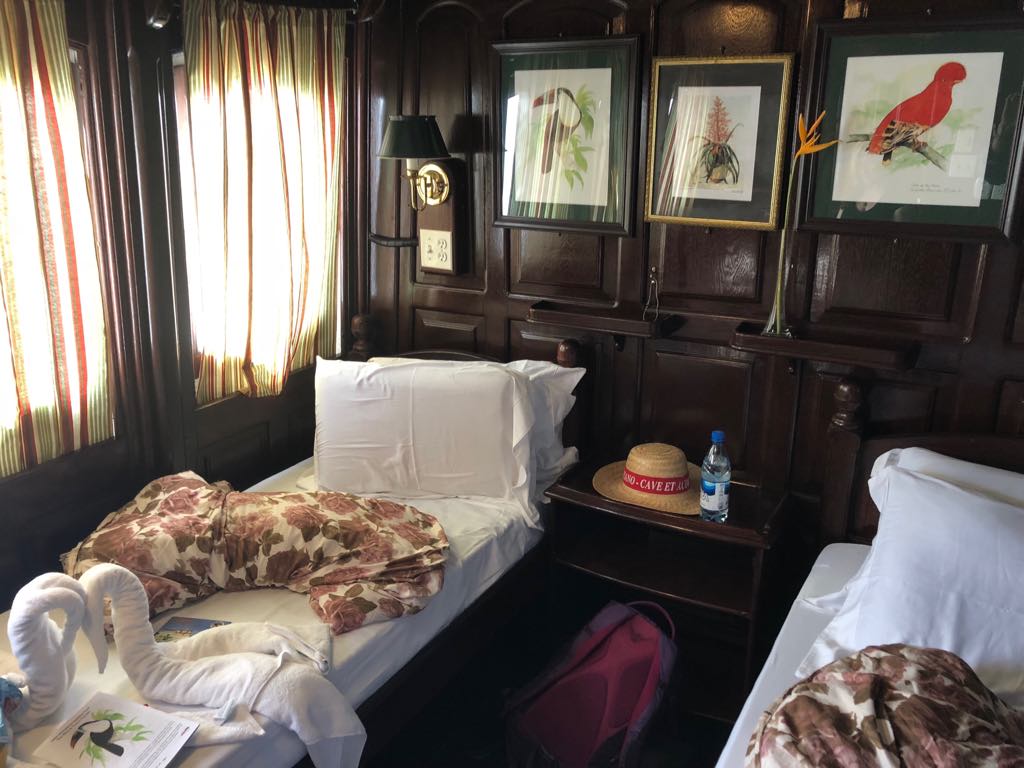
Tucano cabin. * Photo: David Cogswell
The boat had a small dining area where we gathered for all our meals with small round tables covered with red checked table cloths. The top deck had lounge chairs, a hammock, clotheslines and a sun roof that kept the deck from baking too much during the peak heat of the afternoon.
It was the main area where the passengers gathered outside of their cabins. The breeze kept the observation deck moderate in the daytime and cool at night.
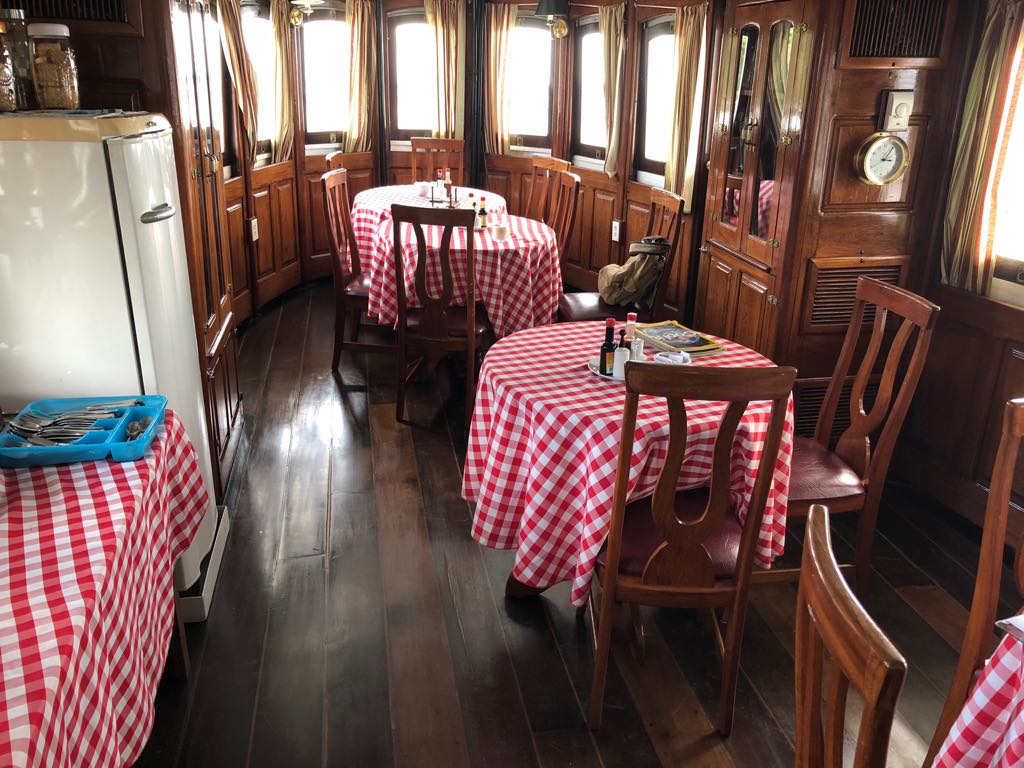
The dining room. * Photo: David Cogswell
From Manaus we traveled upstream on Rio Negro. Edy said we would be traveling about 300 kilometers (about 186 miles) out of Manaus. He said no other operator traveled farther than 100 kilometers (about 62 miles) from Manaus.
For our week in the jungle we encountered no tourists. Once we got beyond the 100-kilometer mark, the only other human beings we encountered were a few local villagers and fishermen.
The Tucano has a capacity of only 17 guests, but the company guarantees all its departures, even if only one person is booked. On my departure there were only two couples besides myself. They were in their 50s and 60s, and were all committed travelers, explorers and nature lovers, though the trip has plenty to offer to a more mainstream, middle-of-the-road traveler, such as myself.
Small Ship Amazon Cruising: Off the Grid
Though the Tucano’s cabins have strong air conditioning that can give you relief from the blazing tropical heat, there is one modern convenience it does not offer and that is wifi. The trip goes way off the grid where there is no cell phone service and the only way of communicating with the outside world is by radio telephone. This is a highly significant element in one’s experience of the Amazon, and I think a positive one.
The effect of being off the grid is disorienting at first, then liberating. I have become so used to a stream of trivialities flowing through my consciousness, constantly popping up and interrupting my concentration, that escaping the internet for a week was like drinking manna from heaven.
I got more good book reading done in spare moments during that busy week than I have in years during my normal routines.
Having to go through cold turkey withdrawal from the internet was actually a big attraction of this trip. It set the stage for developing a quiet, receptive mind in order to observe wildlife and get in tune with nature.
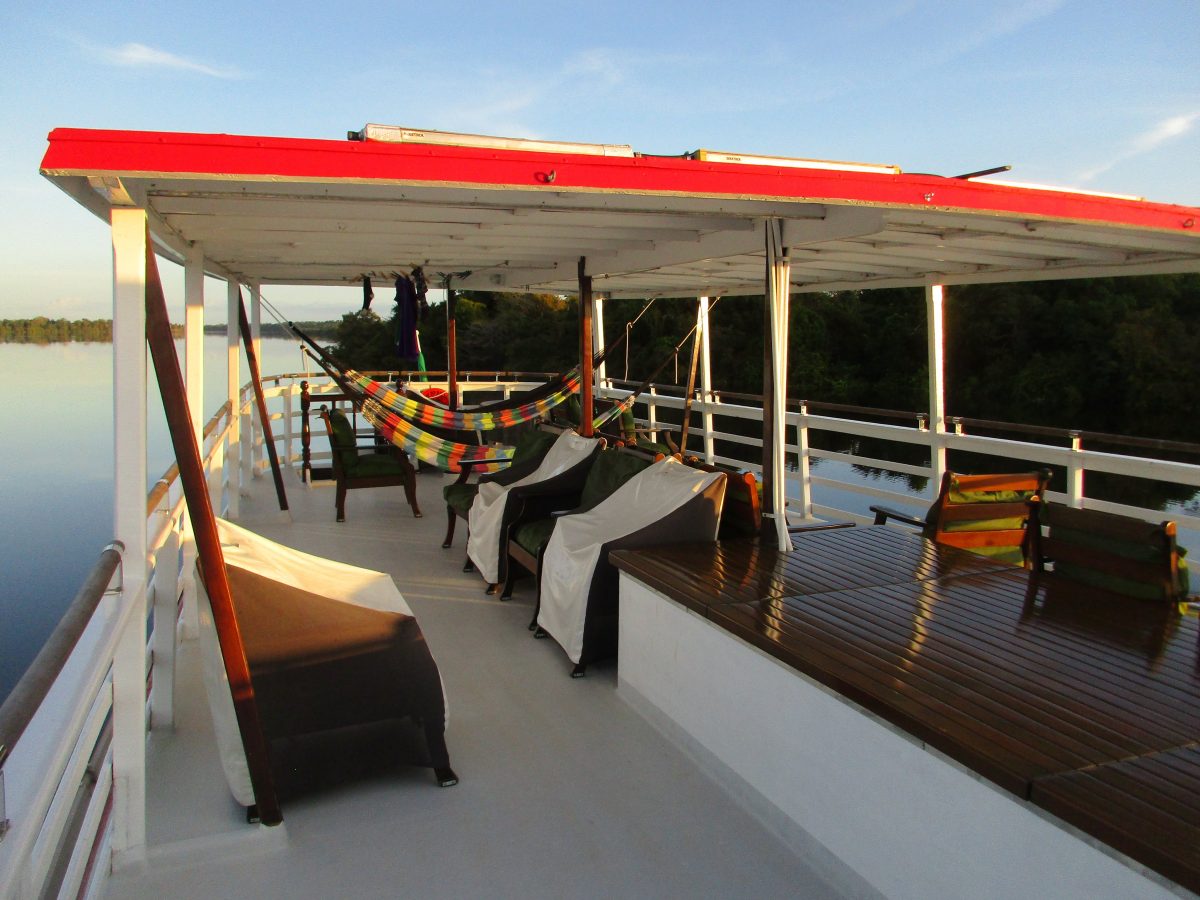
Tucano’s top deck. * Photo: David Cogswell
Small Ship Amazon Cruising: Activities
Every day the touring schedule included four excursions, but all were optional. You could always stay on the boat and relax, watch for dolphins, birds and monkeys from the boat, read in the hammock on the top deck, or take a siesta.
But if you wanted to go, there was an excursion starting at 6 a.m. before breakfast, another after breakfast about 9 a.m., an afternoon excursion around 4 p.m. and a night-time outing about 8 p.m. after dinner.
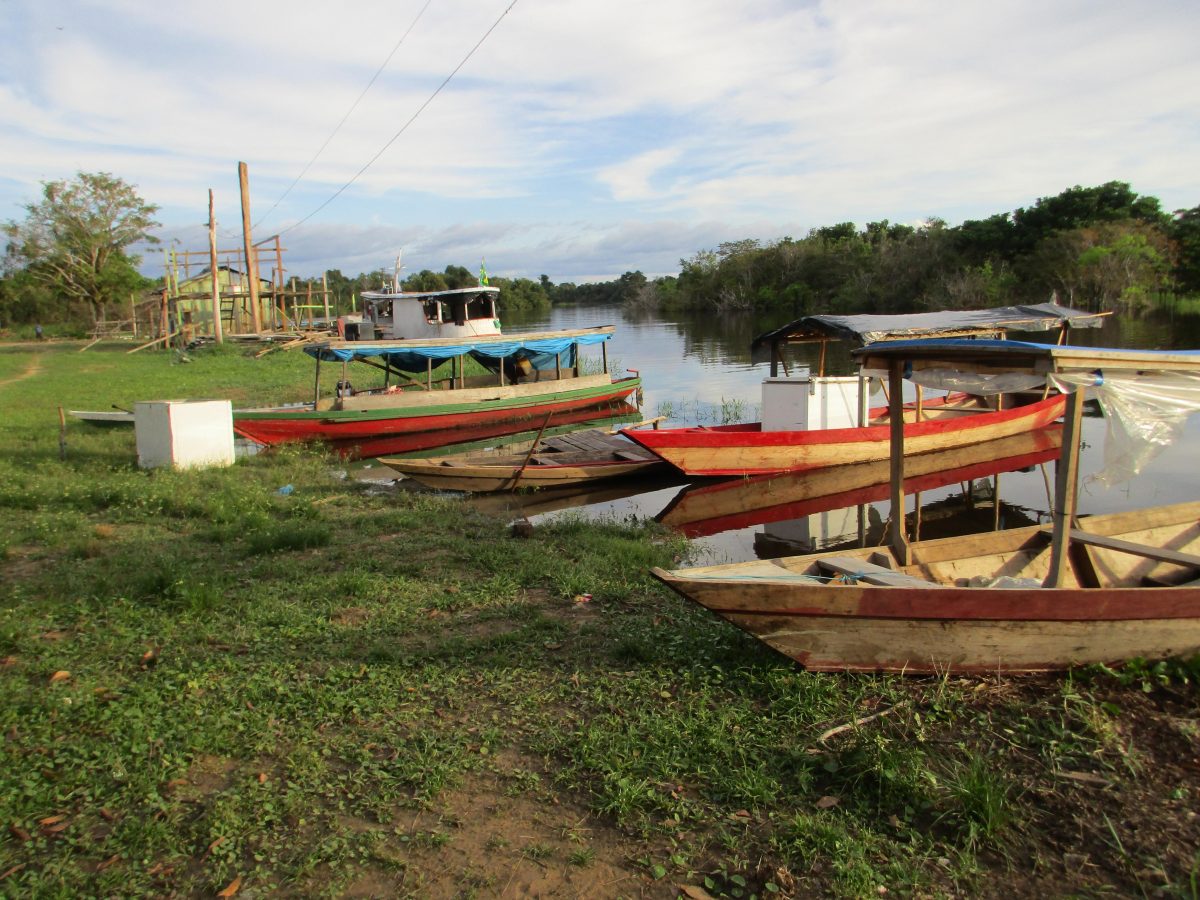
A remote fishing village. * Photo: David Cogswell
The excursions were canoe trips, kayak trips, jungle walks, visits to a village or historical sites. The trips were always highlighted by wildlife viewing, and Edy had an uncanny capacity for finding amazing animals and birds for us to observe.
We saw dolphins, caiman, sloths, monkeys, hawks, bright green parrots flying overhead and gathering in groups in the treetops, and the strange prehistoric greater ani, that looks barely evolved from the dinosaurs and is a huge flying presence.
Edy kept a daily list of our finds on a marker board and the list grew to tremendous lengths.
My Own Inner Amazon
No matter what specific wildlife we observed and added to our lists every day, there was always the great spectacle of the jungle itself, with its towering trees, the dense, crowded growth of twisted, gnarly vines, everything seemingly clambering over everything else, and yet somehow all existing harmoniously in some kind of natural, renewing order. It was more than enough regardless of what specific animals we saw that day.
I was perfectly happy to sit back and take in the spectacle of the trees, thousands of species all tangled up with each other, and the rich clear skies.
The richness of the atmosphere is incomparable. The Amazon is called “the lungs of the world,” producing much of the world’s oxygen. And there we were, right at the source.
Now that I have experienced it, the Amazon will forever reside in my heart.
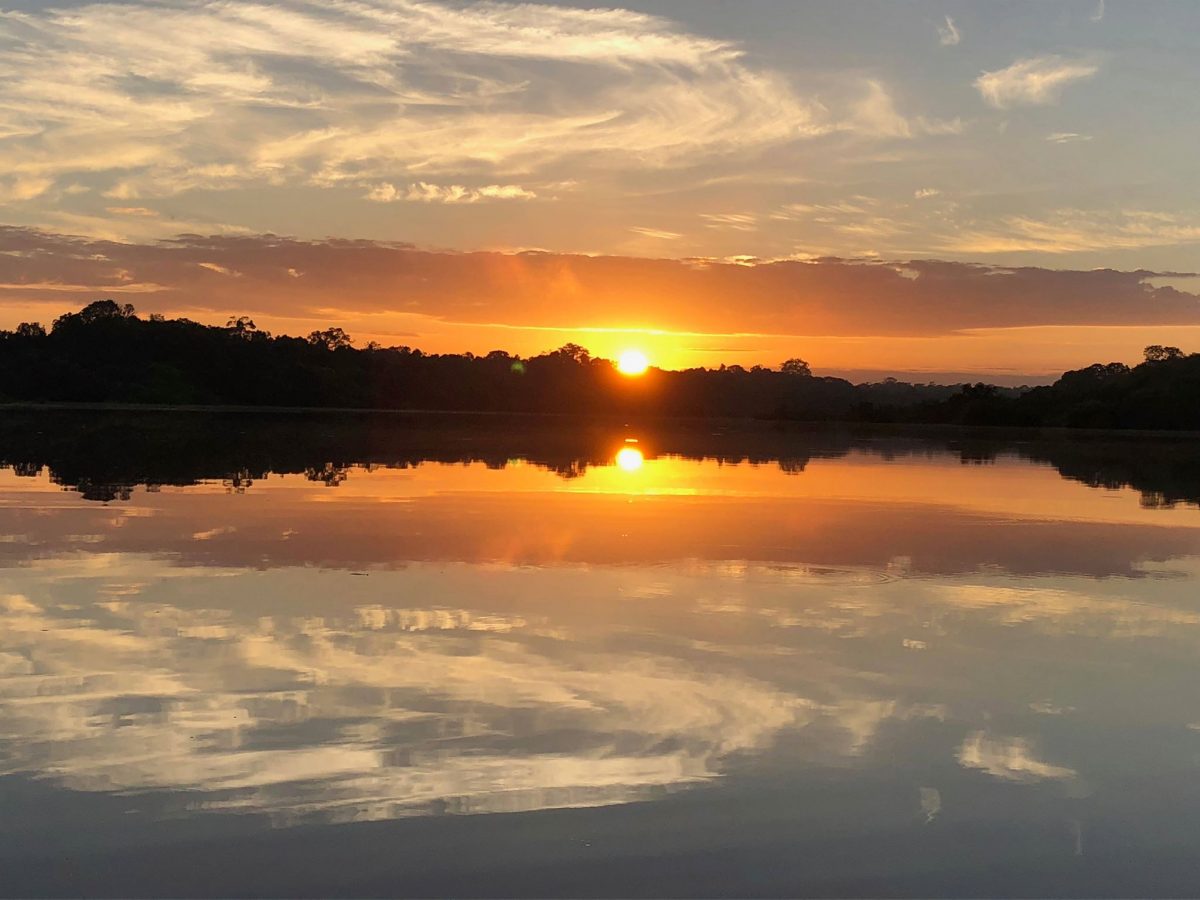
Rio Negro Sunrise. * Photo: David Cogswell
For more information go directly to Amazon Nature Tours or phone 800-688-1822.
READ our great interview with company founder Mark Baker!!
Don’t miss a post about small-ship cruising, subscribe to QuirkyCruise.com for monthly updates & special offers!
© This article is protected by copyright, no part may be reproduced by any process without written permission from the author. All Rights Reserved. QuirkyCruise.com.

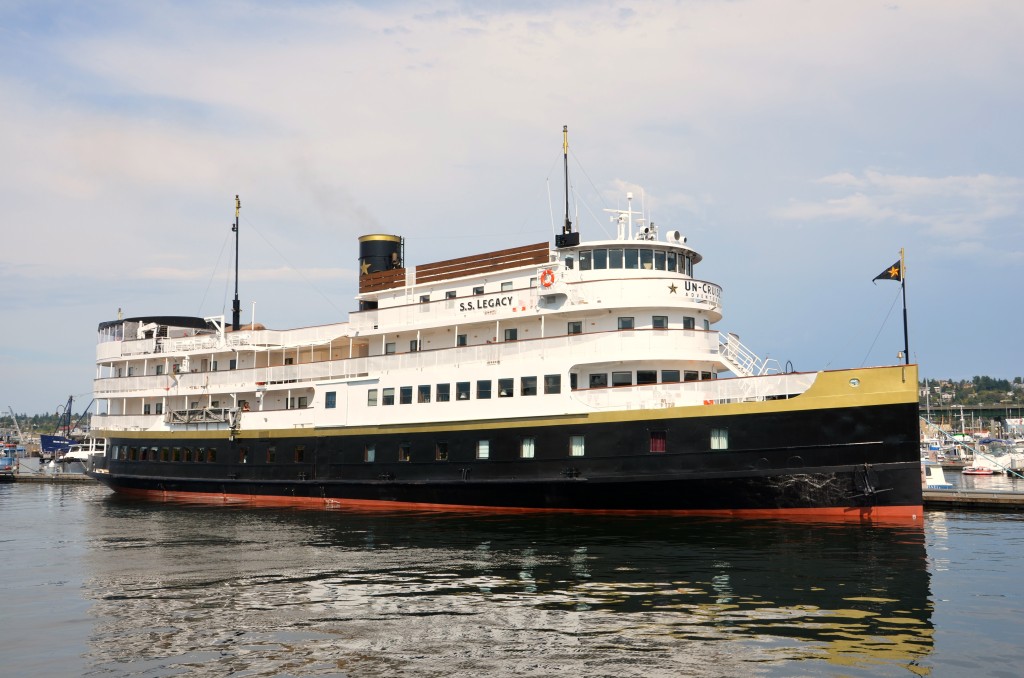
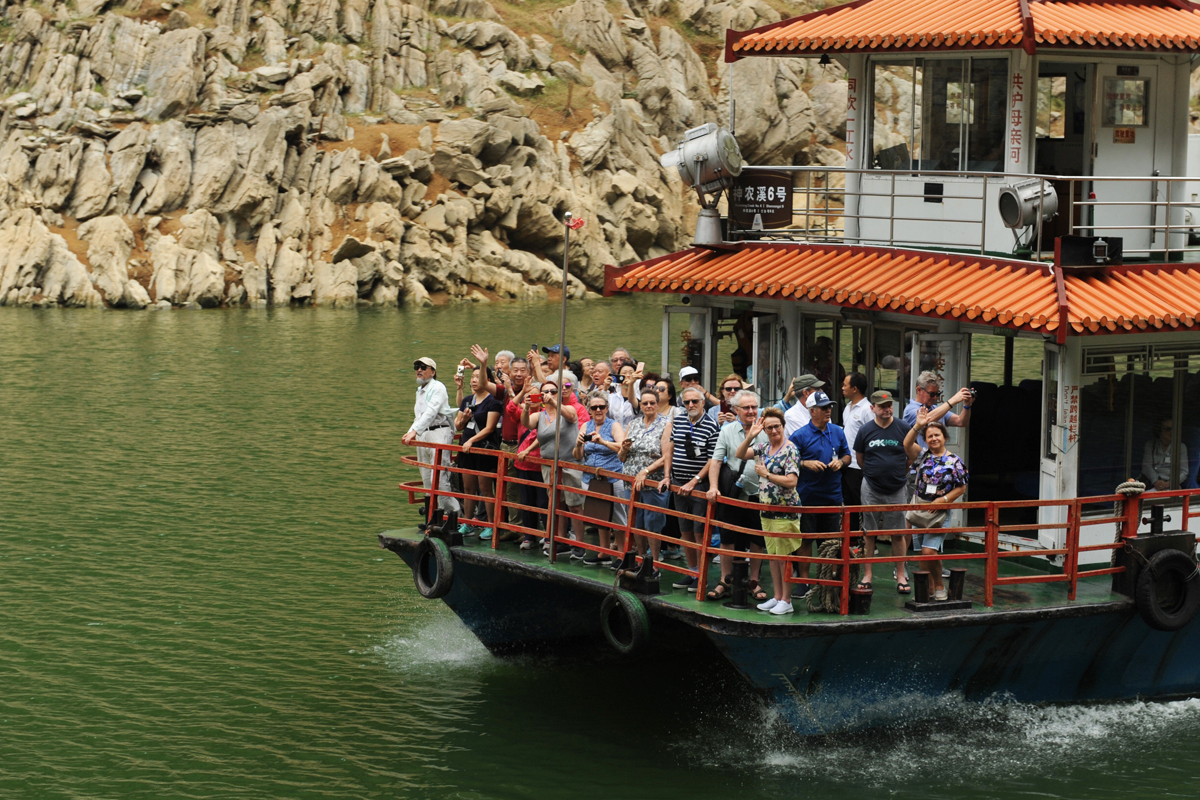
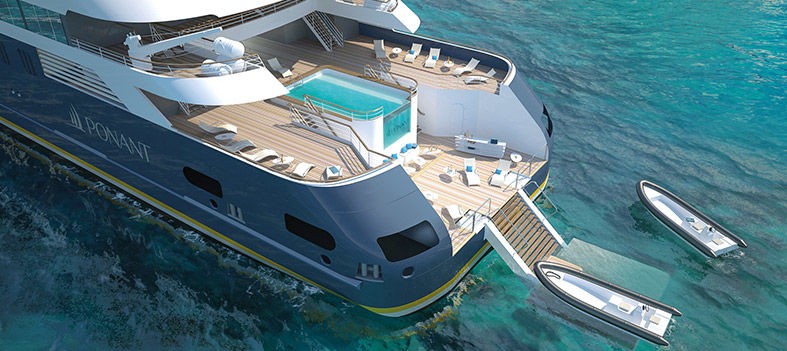
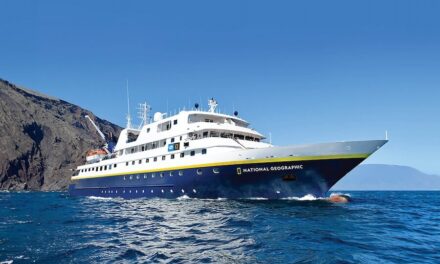
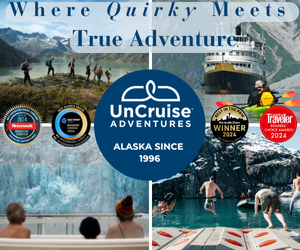
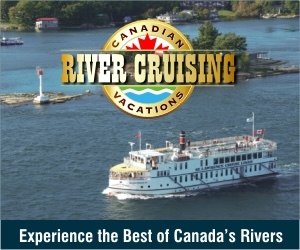

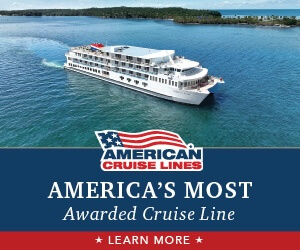

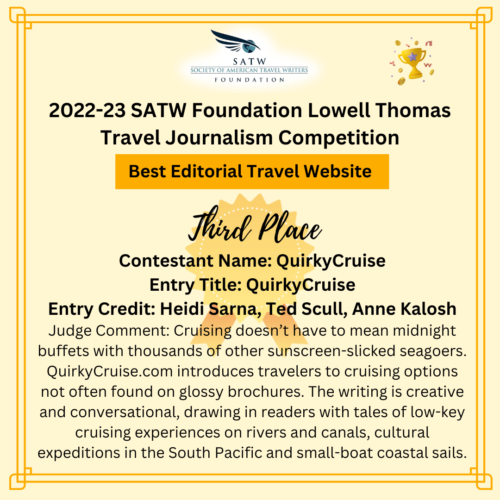


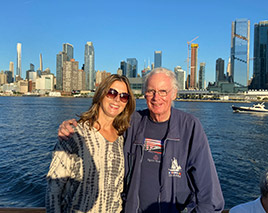 HEIDI SARNA
HEIDI SARNA
